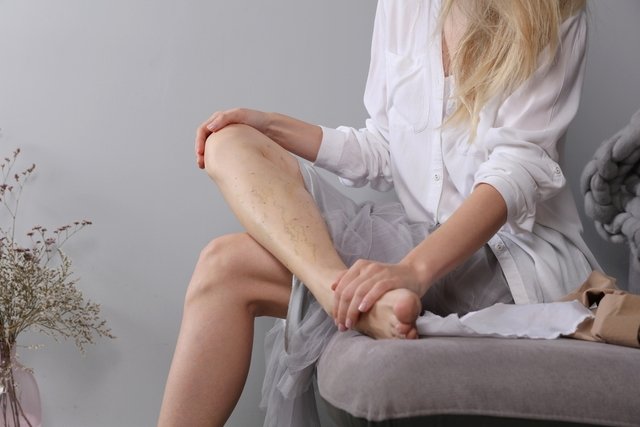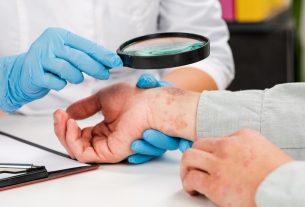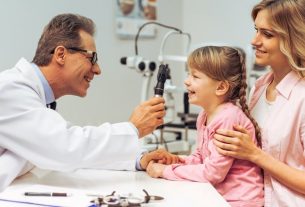Varicose veins are dilated and tortuous bluish or purplish veins that can be easily seen under the skin, being more common on the legs, ankles or feet, causing symptoms such as a feeling of heaviness in the legs, tingling and greater sensitivity in the region.
Varicose veins generally arise due to the loss of the veins’ ability to promote the venous return of blood from the legs to the heart, being more common in women who use contraceptives, the elderly, people who suffer from obesity or who spend a lot of time standing. .
Furthermore, although it is less common, varicose veins can also appear in the esophagus or pelvic region, and it is important that an angiologist or vascular surgeon be consulted so that an assessment can be made and, thus, the best treatment can be indicated, according to the type of varicose veins.

Symptoms of varicose veins
The symptoms of varicose veins may vary depending on the location in which they appear, the main ones being:
1. Symptoms of varicose veins in the legs
The main symptoms of varicose veins in the legs are:
- Dilated and tortuous blue, red or purple veins on the skin;
- Feeling of heaviness in the legs;
- Tingling;
- Greater sensitivity in the region;
- Dark spots on the leg;
- Swelling in the leg, feet or ankles;
- Burning sensation in the leg;
- Pain or throbbing in the leg;
- Leg pain that worsens when standing or sitting for a long time;
- Itching at the site of the vein;
- Thin, dry skin at the site of varicose veins;
- Leg cramps, especially at night
Symptoms of varicose veins in the legs arise due to the inability of the vein to promote the return of blood from the legs towards the heart, and an angiologist or vascular surgeon should be consulted.
2. Symptoms of pelvic varicose veins
The main symptoms of pelvic varicose veins are:
- Severe abdominal pain in women;
- Pain during and/or after sexual intercourse;
- Feeling of heaviness in the intimate region;
- Increased menstrual flow;
- Urinary incontinence.
Pelvic varicose veins are dilated veins that can appear in the pelvic region, that is, they appear around the uterus, tubes and ovaries, and may not present symptoms. See other symptoms of pelvic varicose veins.
It is important to consult a gynecologist if you suspect pelvic varicose veins, so that they can be evaluated and, if necessary, undergo the most appropriate treatment.
3. Symptoms of esophageal varices
The main symptoms of esophageal varices are:
- Vomiting with blood;
- Blood in the stool;
- Dizziness;
- Loss of consciousness.
Esophageal varices arise in the esophagus and normally have no symptoms, and symptoms usually appear when the varices bleed. Check out all the symptoms of esophageal varices.
This type usually occurs due to liver cirrhosis, which ends up obstructing the circulation of the portal system and increasing venous pressure in the esophagus. Learn more about varicose veins in the esophagus.
How the diagnosis is made
The diagnosis of varicose veins present in the leg is made by an angiologist, dermatologist or general practitioner mainly through the evaluation of the characteristics of the veins, and in some cases it may also be indicated to perform an ultrasound examination with Doppler to check the extent of the varicose veins. See how Doppler ultrasound is performed.
In the case of pelvic varicose veins, the diagnosis is made by the gynecologist using a tomography of the abdomen or pelvic region, magnetic resonance angiography or phlebography, which is a type of X-ray that allows visualization of the veins after the injection of a contrast agent.
In the case of esophageal varices, the diagnosis is made by a gastroenterologist through digestive endoscopy and imaging tests, such as computed tomography and magnetic resonance imaging.
Make an appointment with your nearest doctor for a more detailed assessment of varicose veins:
Taking care of your health has never been easier!
Possible causes
The appearance of varicose veins can be favored by some situations, the main ones being:
- Use of contraceptives;
- Obesity;
- Sedentary lifestyle;
- Professional activity, as sitting or standing for a long time can lead to the appearance of varicose veins;
- Pregnancy;
- Advanced age;
- History of deep vein thrombosis.
Furthermore, varicose veins can be the result of genetic factors and are considered a hereditary condition.
Varicose veins during pregnancy
The appearance of varicose veins during pregnancy is normal and is due to increased weight, belly growth due to hormonal changes and increased difficulty in blood circulation. Varicose veins during pregnancy can appear in the legs and feet, in the groin, in the uterus and in the anal region, which are hemorrhoids.
What you can do to alleviate the discomfort of varicose veins during pregnancy is to wear medical therapeutic tights recommended by your obstetrician, avoid standing or sitting for a long time with your feet on the floor, drinking plenty of water and placing a wedge at the foot of the bed. The use of medication for varicose veins during pregnancy is contraindicated.
Types of varicose veins
Varicose veins can be classified into different types, according to the diameter of the affected blood vessel, the main ones being:
- Telangiectasias or spider veins: they are very thin and branched vessels, with a spider web appearance, and have a diameter of up to 1 millimeter, appearing on the surface of the skin, being more common on the legs and face;
- Reticular veins or collateral veins: affect the layer below the skin, measuring 1 to 3 millimeters in diameter;
- Varicose veins: They affect the layer of fat underneath the skin, having a diameter greater than 3 millimeters, presenting a dilated and raised appearance on the skin.
Furthermore, varicose veins can be classified according to their cause or location, being identified by the doctor through diagnostic tests, and thus, it is possible to indicate the best treatment.
How the treatment is carried out
Treatment for varicose veins must be carried out under the guidance of an angiologist or vascular surgeon, and aims to promote improved blood circulation, and varies according to the type of varicose veins and severity of symptoms.
The main treatments for varicose veins that may be recommended by your doctor are:
- Medicinessuch as diosmin and hesperidin, which help improve blood circulation and reduce symptoms;
- Sclerotherapywith the application of substances, such as concentrated glucose or polidocanol foam, directly to the varicose veins;
- laser therapyto remove varicose veins that appear on the nose, cheeks, trunk or legs, and alleviate symptoms;
- Endolaser or intravenous laserwith laser application inside the vein, to close the blood vessel;
- Surgery to remove the affected blood vessel, indicated when varicose veins are large in size and cause symptoms such as pain, itching and swelling in the legs that can compromise movement.
The choice of treatment is made by the angiologist or vascular surgeon, who analyzes the location of the varicose veins, size and associated symptoms. See more details on the treatment for varicose veins.
In the case of esophageal varices, treatment is carried out by a gastroenterologist, using medication to reduce bleeding, surgery or even a liver transplant. In some cases of intense bleeding, hospitalization and injection of medication into the vein are necessary. Understand how a liver transplant is performed.
In the case of pelvic varicose veins, the treatment recommended by the gynecologist may involve the use of analgesics to alleviate symptoms, or embolization surgery on the affected blood vessels.
Care during treatment
Some doctor’s recommendations to be adopted after treatment or to prevent varicose veins are:
- Use elastic compression stockings recommended by your doctor, as they improve venous return and reduce the chances of varicose veins occurring or returning;
- Use medications for varicose veins at the correct times, as per medical advice;
- Place a wedge on the foot of the bed to facilitate the return of blood to the heart;
- Do physical exercises regularly, authorized by your doctor and with guidance from a physical educator;
- Perform lymphatic drainage, 3 times a week;
- Consume foods that help improve blood circulation, such as horse chestnuts;
- Sit and lie with your legs up to facilitate blood flow.
Furthermore, it is important to avoid wearing high heels, sitting or standing for a long time, as these situations can encourage the appearance of varicose veins.
Possible complications
When varicose veins are not treated correctly, there can be complications such as dermatitis, eczema, varicose ulcers, thrombophlebitis, pain and deep vein thrombosis (DVT), which is a serious situation in which thrombi (clots) form in the veins of the leg that can hinder or block the flow of blood.

Sign up for our newsletter and stay up to date with exclusive news
that can transform your routine!
Warning: Undefined array key "title" in /home/storelat/public_html/wp-content/plugins/link-whisper-premium/templates/frontend/related-posts.php on line 12
Warning: Undefined array key "title_tag" in /home/storelat/public_html/wp-content/plugins/link-whisper-premium/templates/frontend/related-posts.php on line 13



